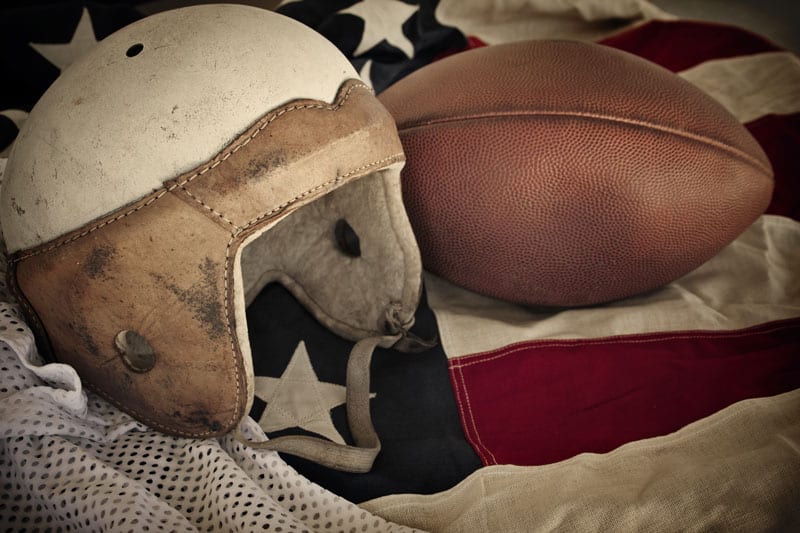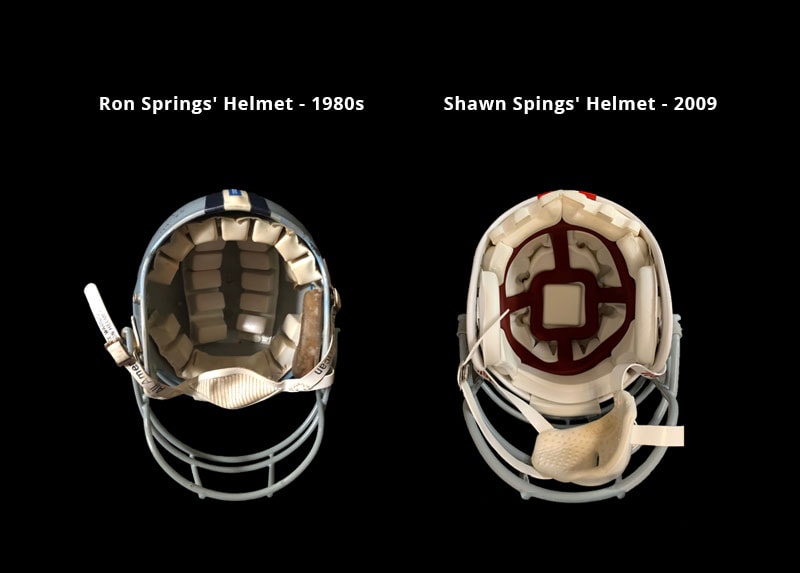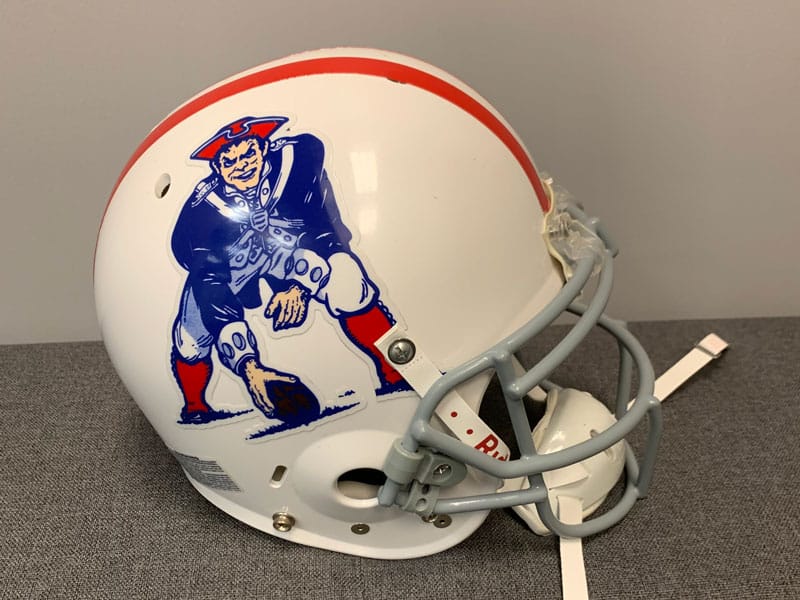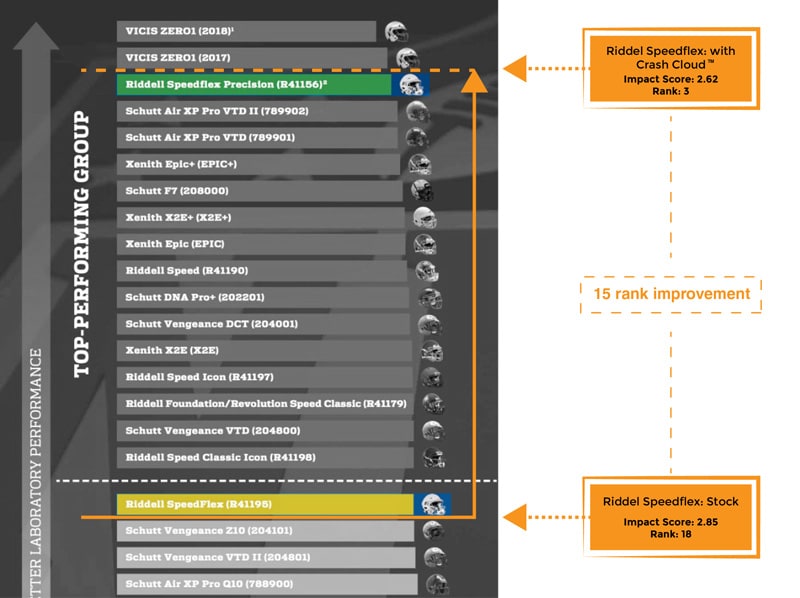
HELMET TECHNOLOGY AND SAFE SPORTS: CRASH CLOUD’S EVOLUTION
Sports and safety technology is a rapidly-developing field that has needed an answer to the glaring halt that helmet infrastructure has come to. While sports have become cornerstones of the world’s pastime, the safety gear surrounding them have needed updating. This is especially apparent in helmets that players wear season after season.
Windpact embarked on a quest to understand the gaps in solutions for protective equipment, and how the science behind impacts should shape our gear. Using the latest in biotech, engineering, and sports science solutions, Windpact wants to show you how the evolution of sports helmet technology can be maximized using knowledge and industry data.
That is why we need to talk about helmets, one of the most important pieces of protective gear used in a variety of sports. Specifically, furthering the evolution of sports helmet technology is a problem that needs a solution, now.
The evolution of helmet technology has been the center of attention as experts debate on how to improve existing technology to keep players safe.
Despite routine safety evaluations for helmets on the market by a variety of professional leagues, Windpact has noticed a lack of innovation in the underlying principles that allow sports helmets to function at optimal performance. Despite strong advocates like the National Football League (NFL) pushing for more research into safety, there are issues with the current framework that many sports helmets are based upon.
As our CEO Shawn Springs found, padding solutions in helmets had not changed much over the years; in fact, that’s one of the major reasons Windpact was developed. As the son of NFL running back Ron Springs, he noticed that the helmet his father wore during his time with the Dallas Cowboys in the 1980s was nearly identical to his helmet he himself wore with the Patriots in 2009—that is 30 years of the same technology!

Think about it; with the growing reports of sports injuries becoming more common, the technology that protects one of the most important organs in our bodies (the brain) has not fully adapted given the data.
Today, we want to look at three major concepts surrounding the evolution of sports helmet technology:
- Why helmets are needed in modern sports
- How far the technology behind them has come
- The related issues of safety due to outdated technology
In a world full of constant innovation and invention, safety technology needs to catch up. At Windpact, we’re here to show you why and how our solutions can fill these holes in the evolution of helmet technology.
In a world full of constant innovation and invention, safety technology needs to catch up. At Windpact, we’re here to show you why and how our solutions can fill these holes in the evolution of helmet technology.
SPORTS HAVE ALWAYS NEEDED HELMETS
Helmets have not always looked like the modern, encased units we are used to in today’s world. They were actually fairly simple, but the reason they were worn has remained the same throughout history. Today, nearly every professional sport requires players to wear helmets, with the express purpose of mitigating concussions and brain injuries.
As early as the 8th century BCE, soldiers adorned their heads with bronze helms to take into battle with them, according to historians at StrongBlade.com. These helmets, called Corinthian helmets, were standard for soldiers; even back then, people understood that the head was an important body part to keep protected.
However, since athletes today do not have to wear helmets to protect from spears and swords, today we want to talk about the more practical units players wear during games. While the earliest of early origins of the helmet are fascinating, the kind of technology we use today is a bit more layered.
Football helmets are some of the most recognizable pieces of sports equipment, so much so that it’s almost absurd to think they’re a relatively recent addition to the game. As early as the 1800s, the dangers of playing football without a helmet were well-understood; reports of collegiate athletes sustaining extreme head injuries following a season brought about changes to the game meant to protect players.
The same article even notes that players began growing their hair very long because they believed the extra protection from their hair would reduce the number of injuries to their heads. It seems that these players were just on the horizon of finding a suitable—albeit low tech—solution to their problem.This trend came on the heels of the first football helmet.
Who was responsible for the very first football helmet is hard to verify, but there are reports that the earliest type of outer head protection geared for the sport was commissioned by Lafayette player George Barclay. George asked a harnessmaker to create a head strap with earmuffs made of padded leather; this is one of the earliest accounts of a football player wearing a type of head protection.
The more complex helmets that surrounded the head would appear soon after. They allegedly have their origins in the Army and Navy; during the early football games they played against each other in the late 1800s. Admiral Joseph Mason Reeve is often credited with inventing the fully fleshed-out football helmet.
After his physician cautioned him that he risked death or “insanity” following more impacts to the head, he decided to take action. He asked his shoemaker to instead fasten leather headgear with ear flaps out of moleskin; thus, a primitive “football helmet” was born.
There was just no foam, exterior, or layered protection at all. It was more of a helmet in the sense that it went on your head and you used it when you thought your head was in danger of impact. That did not stop the Admiral though, and he took his new contraption on the field to share with his colleagues. His helmet was accepted fairly readily, such that there are even reports that paratroopers adopted his design during the first World War.
It’s a simple story, but one that would go relatively ignored until about 1939, when helmets, as we know them, were required to be used in competitive play. This coincided with the invention of a helmet using a plastic exterior, metal, and padding that characterizes a basic helmet design, familiar to us in the 21st century. John Riddell patented the first plastic shell helmet in 1939, and his design has formed the basis for current helmet manufacturers even today.
It seems that even back then, concerns about safety prompted using innovative solutions.

HELMETS TODAY
As the use of helmets became commonplace, concerned athletes and researchers took it upon themselves to establish a regulatory system for checking the quality of helmets and gear year after year at the university and academic level. The development of this system follows this timeline:
- 1939-1943: colleges and the NFL requires players to wear helmets, making them a mandatory piece of equipment.
- 1969: the National Operating Committee on Standards for Athletic Equipment (NOCSAE) was formed with the express purpose of evaluating safety equipment used by players, including helmets. It was formed partially in response to over 100 reports of high school and college football players dying of injuries related to skull fractures and brain bleeds.
- 1973: NOCSAE’s first helmet safety certification protocol is developed and made available for manufacturers to submit their models for testing.
It is important to mention that testing and approval by NOCSAE is not mandatory, however, multiple institutions require their players to use helmets with NOCSAE’s sticker (and therefore, its certification), and thus, it is very uncommon to see unverified helmets used in college sports.
The NFL established its own routine testing protocol, whereby they annually test helmets on the market using certified laboratory facilities to help inform players, coaches, and medical teams. The tests are conducted by an independent testing facility, BioKinetics, and are designed and reviewed by an elite team of experts from the University of Virginia, Duke University, and the University of Pennsylvania.
The tests are conducted using impact severity as an outcome; the ranking is determined by how well the unit mediated impact in the lab against a dummy. The results are published in a poster in each locker room that breaks down the top-performing helmets available versus the lower-performing ones. Helmets that are found to be especially unsatisfactory are placed on a “prohibited” list, banning players from using them in games.
Notably, this most recent poster publication specifies that players will no longer be allowed to “grandfather” wearing helmets previously prohibited in 2018. The results of this removal of the grandfather rule has made waves in the news lately. Antonio Brown, who was recently released by the New England Patriots, was not allowed to use the same helmet he has kept for the entirety of his nine year career due to this new specification.
Tom Brady switched to a newer model for the same reason, as his previous helmet made it on the 2019 “prohibited” list. This is a testament to how seriously the NFL champions safety for its players, and their mission of using research to keep athletes equipped with effective gear sets a powerful example.
This is one of the major components of keeping sports athletes safe; empowering them and their teams with information. It is part of why Windpact is constantly updating our proprietary materials database — as knowledge of injury and safety progresses, it is up to the solutions to adapt. Although no helmet can guarantee protection from a severe injury, the idea of improving standards through constant testing is a noble one.
SO HOW FAR HAS SPORT HELMET TECHNOLOGY COME?
Helmets have a wide range of applications, and they’re a staple piece of equipment for most athletic sports.
THE MOST COMMON APPLICATIONS FOR HELMETS INCLUDE:
- Football helmets
- Cycling helmets
- Motorcycle helmets
- Hockey helmets
A football helmet has three (sometimes four or even five) major parts that comprise it. These parts have evolved throughout the history of the game, but not by much.
- The outer shell: usually made of polycarbonate, which is a lightweight but durable material that can withstand a variety of temperatures. The outer shell used to be made of soft leather, as demonstrated by Barclay’s and Reeve’s early designs. Replaced with plastic by John Riddell in 1939.
- Energy-absorbing padding: usually nitrile or polyurethane foams, which line the inside of the shell to absorb impact.
- Face mask: usually multibar masks. These face masks are used to provide protection for the face. They are typically made of titanium, steel or carbon steel, and coated in a plastic polymer.
A cycling helmet is made up of two basic parts, and they must strike a balance between being lightweight and aerodynamic — to account for the velocity of the cyclist — and protection against falls.
- A lightweight hard shell: usual models are made of polycarbonate shells, similar to football helmets, but they have a noticeable taper and do not cover the entire head (ears and all).
- A soft lining: usually polystyrene foam, very different texture to softer foams. The linings can be made of anything, but polystyrene is the standard.

Motorcycle helmets handle extremely fast speeds in traffic; they come in different varieties, but the most common is the full face helmet:
- Outer shell: similar to football helmets, typically made of polycarbonate or carbon fiber; notably, they extend around the full head and protect the chin, something unique to motorcycle helmets in particular.
- Inner lining: usually polystyrene, but some premium models offer more reinforcement through foam or cloth combinations.
- Visor: usually tinted visors that cover the eyes and protect from the wind.
Hockey helmets are a good place to highlight the combination of football and motorcycle helmets, since they share a lot of the same machinery:
- Outer shell: this is typically made of vinyl nitrile, which can be formed into a robust plastic shell that offers protection similar to polycarbonate.
- Energy-absorbing lining: the standard models are lined with vinyl nitrile foam.
- Face shield: similar to the visors of motorcycle helmets, the primary purpose of these visors is to keep the face safe from incoming pucks.

First and foremost, how do you even test sports helmet technology, to begin with? The tests are often cited in the news, but the methodology underlying them is not readily available.
It is important to note that helmet testing is a translational science, meaning that the tests are carried out on dummies and the lab data is meant to be used (or, translated) into better recommendations that benefit humans. When it is not realistic or safe to recruit human volunteers in research, translational science has come to the rescue, and the research principles that guide it have been used to help improve diagnostics, medicine, and science time and time again.
Helmets are tested using a variety of different laboratory configurations, but the process tends to be the same. Obviously, it is important to standardize the testing—standards and replicability (i.e. being able to copy what a researcher did in order to verify the underlying methods) are part of the scientific method.
Each sports professional body has its own system for overseeing the regulation of helmet standards for their athletes. Bicycle helmets must meet the US Consumer Product Safety Commission’s standards through rigorous testing in order to be sold, and the National Hockey League (NHL) requires all players signed to wear a helmet.
There are even cases where professional leagues contract third-party laboratories to conduct testing.
The NFL, for example, contracts an independent helmet testing facility, BIOKINETICS, to run a variety of tests (listed here):
- Helmets are tested on a mono-rail “drop tower” that simulates a strike from a variety of configurations.
- A “pneumatic ram” which is basically a small battering ram that strikes the helmet at different locations, including one at random.
- A sliding carriage with a dummy head on a pivot that is subjected to different linear ram forces. This is the test most commonly used by NOCSAE and the NFL subcommittee review, and the full protocol is available here.
This type of testing is crucial to evaluate the baseline durability of a helmet to survive impacts. The gaps in translatability can be solved by the solutions in Windpact’s proprietary software; Windpact maintains and constantly updates its Platform as a Service (PaaS) software to account for available and validated science.
PaaS, to Windpact, means that clients can work with our material data, industry expertise and simulation modeling to test their helmet or foam configurations before it even reaches physical field testing — our service is to put these tools in your hands and generate the data you need to optimize your platform. This translates into time saved, assets saved, and more precise product design.
By constantly adapting, the next generation of helmet testing can stand the test of time.
SAFETY IS ONE OF THE BIGGEST PROBLEMS FACING SPORTS TECHNOLOGIES TODAY
Helmet technology needs consistent updating because the forces acting on players can be devastating. Concussions are a good example of this: approximately 1.7-3 million concussions occur each year, even in individuals wearing helmets, according to the UPMC Sports Medicine Concussion Program.
College football players, in particular, receive upwards of 1400 head impacts per season, distributed on average as 6.3 impacts per practice, and 14.3 per game, according to a recent study completed by researchers at Brown University. In the NHL, there was an average of 63.8 concussions per season between the years 2005 – 2012.
Concerns about safety were the primary catalysts for the widespread use of helmets to begin with; think about the early football games in the late 1800s, where helmets were made of moleskin, for example. Furthermore, it’s clear that college football leagues and the NFL have noticed how debilitating injuries can be to their players, as well as how common they are.
The National Collegiate Athletic Association (NCAA) reports that concussions make up about 7.4 percent of all injuries sustained by college football players. While the same report acknowledges that lower limb injuries make up a greater proportion of injuries overall, it seems odd that one of the most “protected” areas of the body during the game falls victim to consistent injury as they found.
The American Association of Neurological Surgeons estimated in 2009, that the highest number of head injuries occurred in the following groups:
- Cycling came in first at 85,389 injuries
- Football second at 46,848 injuries
- Baseball and softball third at 38,394
Naturally, it is key to look at data like this if we hope to understand how to change the trend of head injuries across different sports. Cycling, football, baseball, and hockey all have their own unique risks, and these risks require a solution that adapts to the sport and prepares players for any kind of impact. Consistent testing and looking at trends is the science behind innovation, and that is a principle both Windpact and the NFL understand. Just last week, the NFL released its most recent injury data ranging from 2012 to 2019, owing to their commitment towards updating their safety standards with reliable data.
Speaking of injuries, the type of damage that can happen to players matters when we talk about helmet safety…
WHAT KIND OF INJURIES HAPPEN IN MODERN SPORTS?
If we are going to talk about solutions to impact reduction, we need to understand how an impact injury occurs, according to science. There is some physics to be explained here, and they’re necessary to grasp what separates a minor impact from a major impact.
A great example to visualize and understand this impact is with a moving car. When a car moves us forward, it’s actually the force of the vehicle acting on our bodies, moving us in the direction of the car. Our bodies travel at the same velocity as the car due to the same forces pushing us, meaning that if we crash, our bodies will still be traveling forward independent of the car. It’s why you see people sustain injuries from the steering wheel; their bodies were still traveling even though the car has stopped. It’s also why you can be ejected from a vehicle.
The forces that drive objects forward do not simply disappear upon a sudden stop, they are conserved and distributed. This is the essence of the law of conservation of energy. The law of conservation of energy states that energy cannot be created or destroyed, but can be transformed and repurposed. When considering head impacts, the energy that is transferred from an impact does not disappear, it is distributed throughout your helmet. When you are brought to a sudden stop, the cumulative forces that were acting on you during motion are now transferred to your body in a very short span of time; this is called a deceleration injury.
This rapid deceleration is part of the reason head trauma happens in vehicle accidents, for example.
If you consider the head of a running back as an object accelerating towards a fixed path across the field, and, suddenly, that running back is tackled, you’ve essentially brought his velocity to a halt while the force acting on him is conserved through the movement. The forces that propel him forward, as well as those that stop him, are now distributed across his head within a rapid span of time and short distance. Researchers viewing video recordings of this phenomenon have calculated that, oftentimes, the force placed on the head is as much as 4 times that of gravity.
Thus, to calculate the force of an injury, we need to consider the following factors:
- The velocity of the individual: How fast you’re moving forward matters and determines the effect of the impact’s force.
- The rate of deceleration: Bringing your velocity down to zero too quickly doesn’t give the force enough time to distribute evenly. It’s why you feel that “sudden stopping” sensation when you halt too quickly.
- The stopping distance or the distance traveled that brings the individual to rest: If you’re brought to a stop within a small distance, that energy has nowhere to go except right through your body.
Going back to the car example, imagine you are coming to a stoplight, traveling at 35 mph. Regardless of when you hit the brakes, your initial velocity will be 35 mph and the final velocity will be 0 mph in both cases.
This means that it requires the same amount of energy to stop the vehicle before reaching the stoplight. However, the duration at which you stop the vehicle will drive the effect you observe on your body and the contents of the vehicle.
If you start using the brakes 100 yards from the stoplight, it is unlikely that you will feel any significant force, but if you slam on the brakes 10 yards from the stoplight, you will be jolted forward, and you might even spill your morning coffee! In this analogy, the difference in sensation from a slow stop to a fast stop is clear.
The physics that have been shown here are the underlying principles that helmet testing services use when evaluating impact severity. These tests may mean the difference between being sold on the market, as many professional organizations require some kind of certification before allowing their players to use them.
The speed and force of the “battering rams” utilized in the NFL testing procedure simulate the deceleration forces by applying rapid, forceful strikes within a short span of distance and time. They also approach the impact from multiple angles, to account for real-world applications and situations athletes may encounter.
Helmet manufacturers face an interesting problem here; minimizing deceleration and impact injuries while also providing adequate protection can be quite the balancing act between utility and comfortability. As helmet testing has shown, a unit has to be versatile, but also wearable; a unit bogged down by extra exterior hardware may not be practical.
Where, then, can the solution be found?
That is where Windpact’s very own proprietary system and Crash Cloud technology comes in.
WINDPACT’S CRASH CLOUD HELMET TECHNOLOGY IS BUILT ON YEARS OF RESEARCH ON SPORTS SAFETY
Crash Cloud is Windpact’s solution to mitigating impact in contact sporting equipment.
As we have talked about, traditional helmets all have two integral parts, regardless of the sport they’re used in: a hardshell exterior that surrounds a shock-absorbing material, which is typically a foam or vinyl nitrile padding.
Windpact does not offer a new foam solution, but rather a unique combination of controlled airflow and foam that disperses energy on impact. The result is a helmet padding configuration maximized for impact protection.
We like to describe the Crash Cloud unit as balancing performance and safety; intelligently solving for a wide range of impacts. It was developed in order to provide solutions in any type of impact event that affects the human body.
Impacts occur on the field, but can also happen while driving, or biking; there needs to be a solution that accounts for almost any situation and protects where it matters the most.
The technology works like this:
- Crash Cloud units line the inside of the helmet in concert with or in place of foam or padding already there. Meant to work in tandem with existing helmet infrastructure, the unit is lightweight, durable, and powerful.
- Crash Cloud’s Wind Springs absorb the energy of an impact and compress accordingly.
- This compression is made possible due to Impact Vents that distribute and modulate the energy from the strike.
- Wind Spring and Refresh Vents rapidly reinflate to brace for the next impact, lending a unique versatility to a variety of situations. In real life, impacts can often be multiple hits within a short span of time, a situation Crash Cloud accounts for.
Shawn Springs first conceived of the technology after noticing the lag in innovative units that should be lining helmets; his father’s helmet and his own helmet simply used traditional foam padding.
The impact itself needs a unit that adjusts because no two impacts are exactly the same. Some impacts are singular, while others can be rapid; think of a hit to the head from a baseball versus continuous blows from other players.
Our landing page says it best, but Windpact is concerned with three major tenets of safety utility, that being:
- Performance: improving safety should not be a trade-off between protection and adaptability. Crash Cloud was designed to work with you, not against you; a versatile piece of equipment that does not interfere with your performance.
- Comfort: rather than give you even more padding, Windpact went the opposite and created a solution that is lightweight but powerful. With smarter solutions, there should be less need to sacrifice comfort and wearability.
- Style: Windpact wants to make sure manufacturers and designers keep their creative freedom, and Crash Cloud offers a great solution that does not force them to account for added bulk or padding.
Furthermore, Shawn noticed the technology in his son’s car seat after a collision; while he sustained injuries from the accident, his son remained protected. The technology within the car seat was based on the science of “dispersion” — our CEO describes it best in a recent TEDx seminar he gave in Columbus, Ohio in 2015.
The ability to reinflate and disperse is especially interesting. Returning to the original state as quickly as possible is critical to achieving more protection. Foams available on the market are designed to do a pretty good job of returning to their original state, but there are some issues.
There are several areas for improvement in foam layers popular among current helmet brands:
- Foam offers some protection, but it is limited by the size of the helmet itself; only so much foam can fit in a helmet without constricting the skull. Here we need to strike a balance between performance and safety.
- Foam is included to absorb the shock, but depending on the type of material used in it, it may not perform optimally against every type of impact.
- The way the forces of an impact are distributed throughout the helmet is oftentimes too large for traditional foam and padding to absorb. Severe impacts can vary from helmet-to-helmet, or helmet-to-ground.
- Foam padding is usually fine for straight-on collisions, but the reality is very different. An impact can come from any angle, and foam covering may not be able to account for the angular changes. These secondary hits are called rotational impacts.
In laboratory testing on dummies and foams available on the market, Crash Cloud devices were calculated to reduce the cumulative forces acting on the dummy better than just foam alone.
The unit also reduced the overall acceleration of the impact, speeding up the return to normal configuration, as interpreted by Windpact engineers.
For example, think of an airbag that deploys during a car crash; the bags use air combined with compensatory force (which is to say, they explode from the dashboard) to cushion you during a crash and absorb the forward-moving energy.
Given that example, there are a couple of questions to be asked here:
- But, what if the science of the airbag was minimized and transformed to offer protection at the level of helmets?
- What if, by removing the explosive force, and, instead, taking advantage of the dispersion offered by air, the injury could be mitigated on a more personal scale?
- If we repurpose this air dispersion technology, can it contribute to the evolution of sports helmet technology?
These are the exact questions Shawn had in mind while developing active solutions for mediating impacts, and thus, Crash Cloud was born as part of the answer. Our informational video describes the solution as tiny airbags for your brain.
This technology synergizes well with nearly almost any helmet and foam configuration. Going back to the NFL’s recent poster publication of most effective helmets, Crash Cloud had a hand in improving scores on safety in a certain model that is extremely popular on the market.
Riddell, one of the premier helmet manufacturers commonly used in competitive sports, had a few helmets reviewed by the safety panel that generates helmet recommendations for players. As part of a contest, Winpact tested the Crash Cloud in one of the Riddell models evaluated in this most recent test. As this is all pilot data, the use of these configurations is not available for the market nor is it meant to be a comment on the current safety of Riddell’s technology, but it offers an interesting look into the power of Windpact’s Crash Cloud technology.
It was here that Windpact noticed a couple of interesting things:
- Riddell’s Speedflex helmet without Crash Cloud’s patented technology ranked at #18 in their ranking system.
- Riddell’s Speedflex helmet with Crash Cloud’s patented technology ranked at #3 in their ranking system.
- That’s a 15 rank jump in safety! This was all accomplished with prototype pads and without any redesign of the helmet itself.
This kind of testing is only part of why Windpact’s solutions are some of the most intuitive on the market. and is an example of the kind of changes that could theoretically be made to any helmet configuration, not only in the field but also in virtual models. If a helmet model is ready to go, we can solve any impact problem in a span of 2-4 weeks, adapting to your needs without changing the design. Windpact engineers estimate that the speed at which a new product with Crash Cloud can reach consumers is improved by almost 30% using our modeling and advanced software.

What I mean is that Crash Cloud’s role in the evolution of sports helmet technology is not just surface-level hardware. Our units can be modeled using data configurations, utilizing a multi-faceted system that takes the input from your helmet parameters, combines it with our expansive proprietary software, database of foams and market standards, and exports a predictive model that tests your technology with Crash Cloud.
Our proprietary system offers designers:
- Access to industry-validated data points on impact testing
- A simulation model to work with that saves you time, and
- A platform that works with your inputs to help you find a solution faster than through manual means.
Through these means, Windpact can increase the effectiveness of existing foams and helmet configurations faster than through traditional testing protocols. These solutions translate into physical improvements in field testing models.
This powerful versatility is made possible by Windpact’s growing database of foam materials by way of our proprietary software. With access to hundreds of configurations for foam and data, Crash Cloud’s technology can be tested with your device before it even reaches the field!
These impact results are not limited to only Riddell. We have been successful at reducing the weight and size of many products while improving their impact performance in multiple industries (military, automotive and more); all this through a combination of our software system and Crash Cloud applications.
Windpact’s Crash Cloud, in tandem with our access to market data, wants to continuously offer solutions to manufacturers of not only helmets, but any industry that needs versatile technology to solve a versatile problem. As of writing, Windpact has partnered with a variety of institutions that could benefit from using Crash Cloud and our expansive data set; automobile and military initiatives are on the horizon for using our technology for solving safety problems. In addition, Windpact has an extensive simulation protocol that can show you how your product can be improved — contact one of our engineers to see how your product can be optimized through Crash Cloud.
CONCLUSION
These types of applications are exciting and expansive, but it all comes down to one thing: safety. That is why Windpact created the Crash Cloud with broader applications in mind; if it can be subjected to an impact, Crash Cloud can help. Safety at all levels of sports is an area of particular interest. Impact reduction is one of the most talked-about problems in helmet design among the NFL today, and finding viable solutions is Windpact’s aim. While the NFL has been a leader in trying to discover new, inventive ways of mitigating injuries among its players, Windpact has joined the search towards better gear, and safer solutions.
Throughout antiquity and modern times, helmet technology has been the focus of biotechnology, engineering and neuroscience researchers all wanting to reach a singular goal: improving protection and helping to maximize performance.
Evolving sports technology requires intuitive solutions that adapt to changing times. The evolution of sports helmet technology can only progress if we consider past and current needs of players. Approaching a problem singularly is not what Windpact is about; combining a proprietary characterized foam material database and FEA modeling is how we provide optimal solutions for any manufacturer. That solution could be Crash Cloud, or it could be another foam solution. Windpact is foam-agnostic and we have engineered cutting-edge processes on how foam materials are combined to solve for impact problems.
The unit is so compact and flexible that it can be applied to most configurations; the possibilities are part of why Windpact values intuitive solutions, not necessarily bulkier ones.
If you are a manufacturer interested in seeing how your unit or foam could be the next step in evolving helmet technology, contact us with your query — we will work with you to not only improve safety but maximize your product’s value through machine modeling and data-driven recommendations. Windpact’s extensive and detailed simulation models, as well as a constantly-updated data set of cross-market knowledge, your inputs can be used to generate a solution before it even reaches manual testing.
